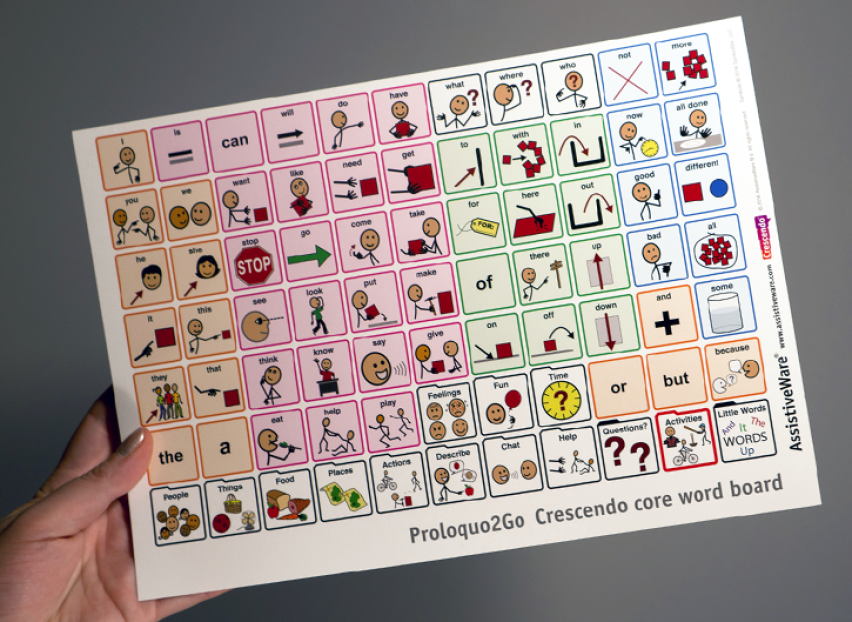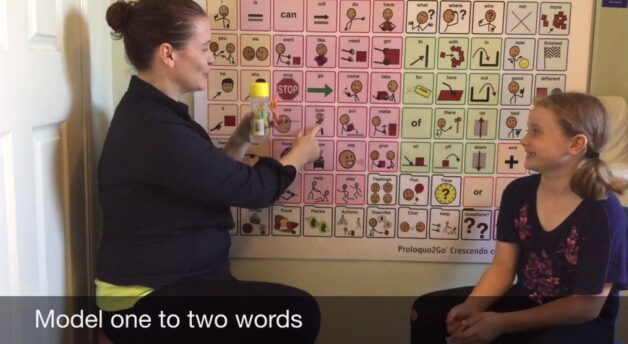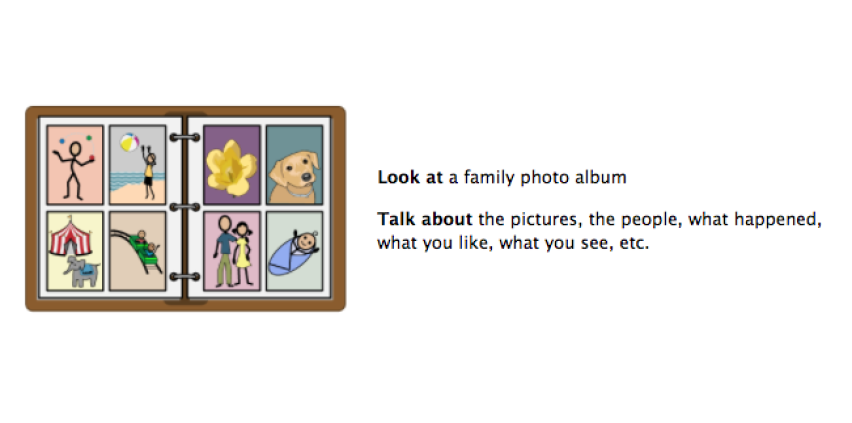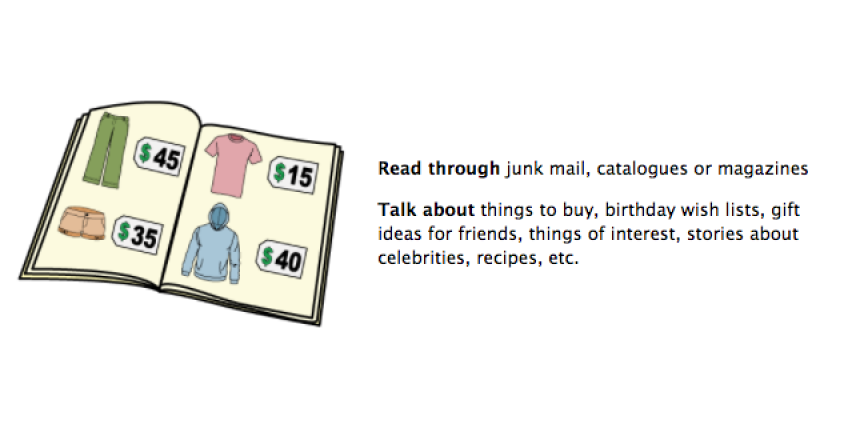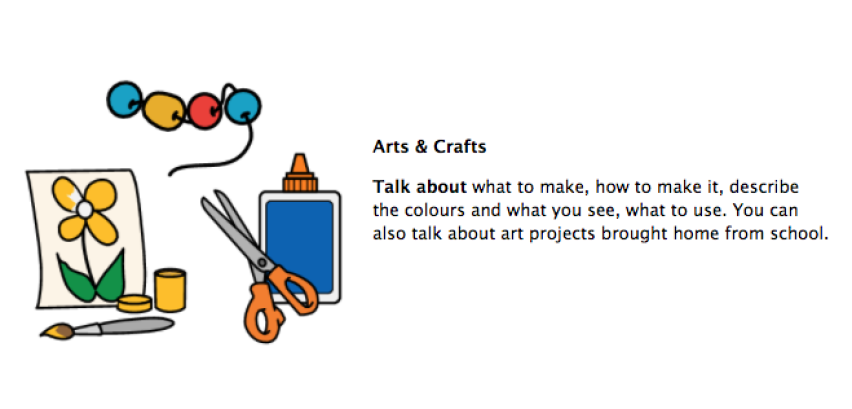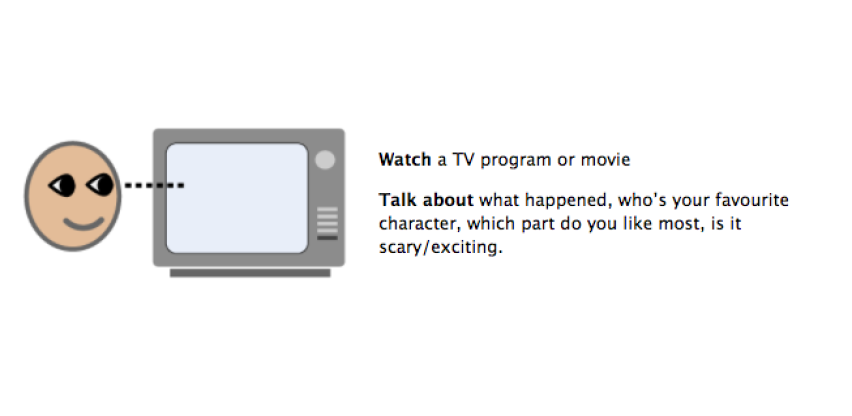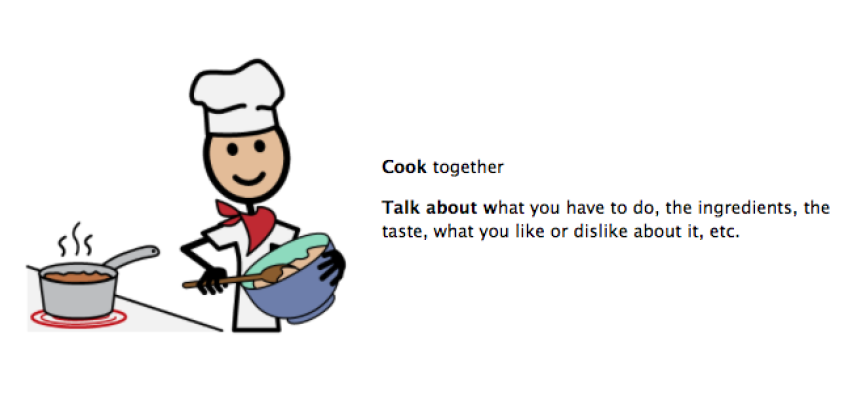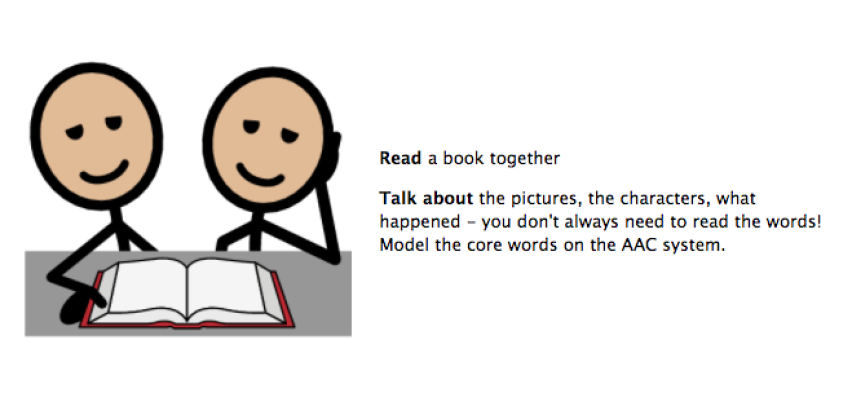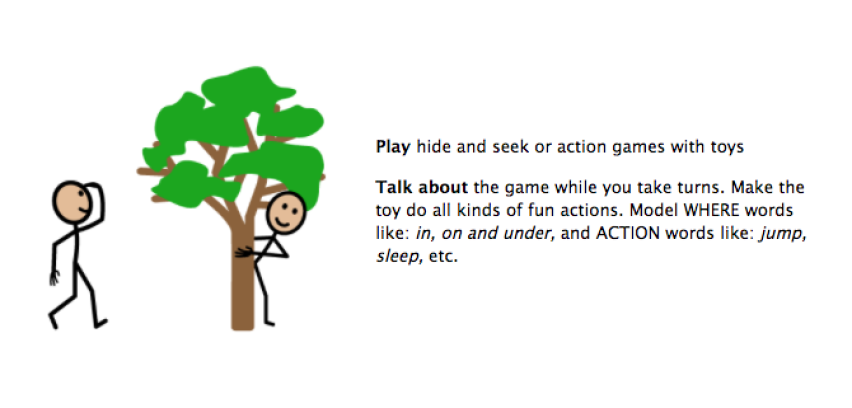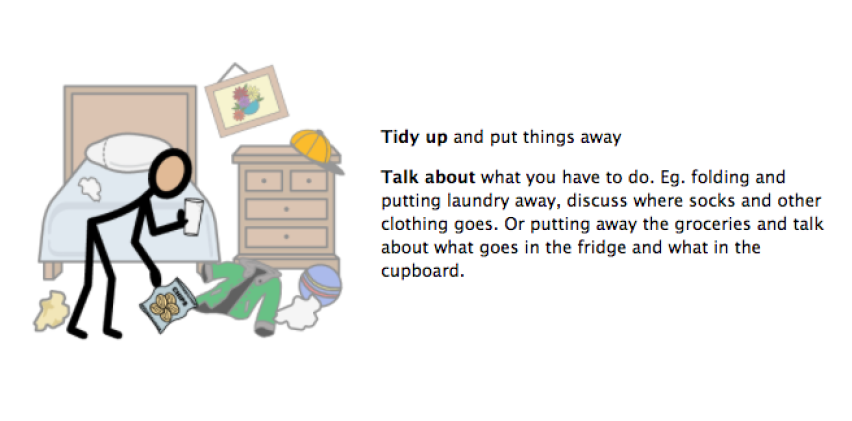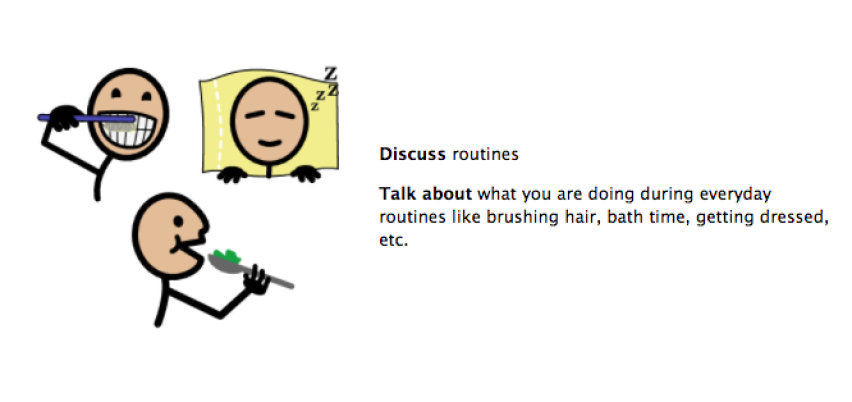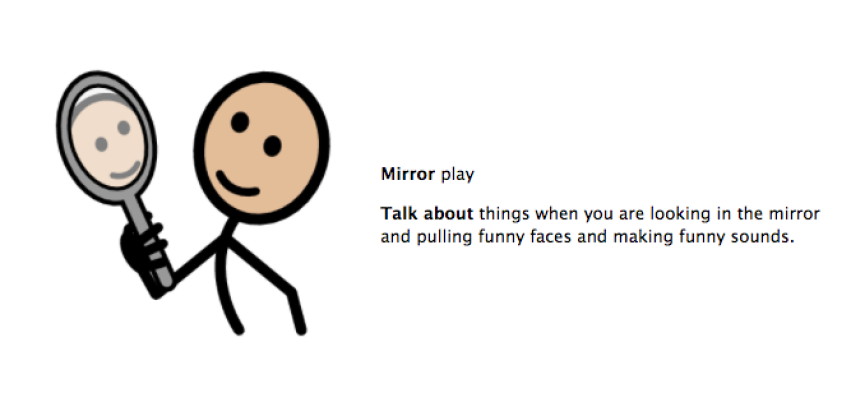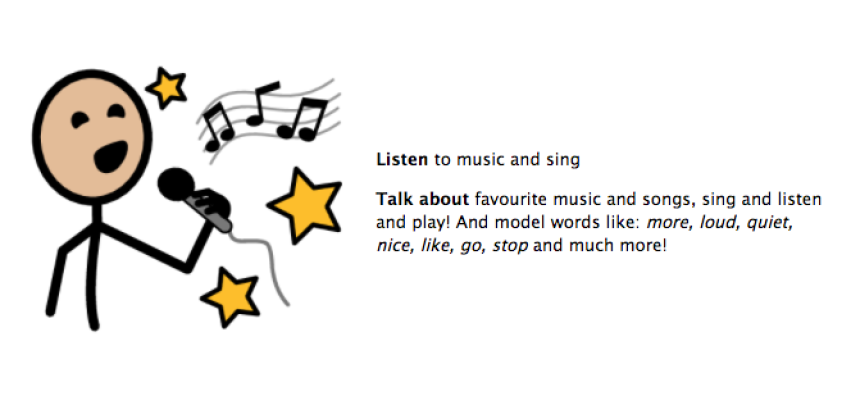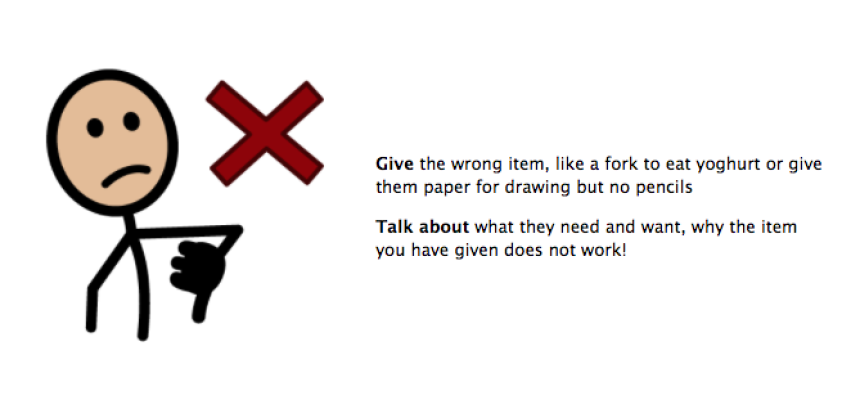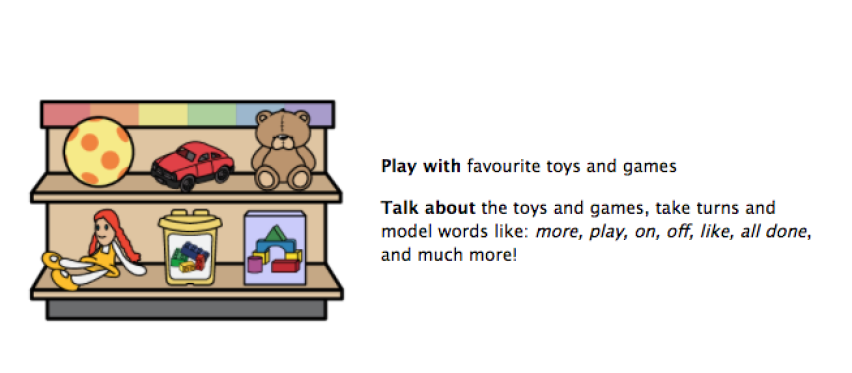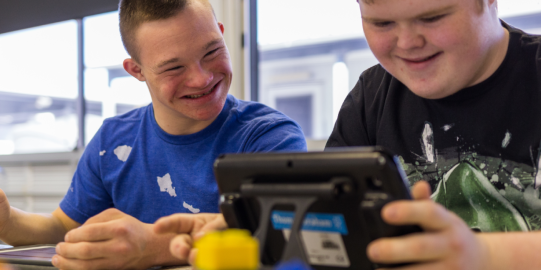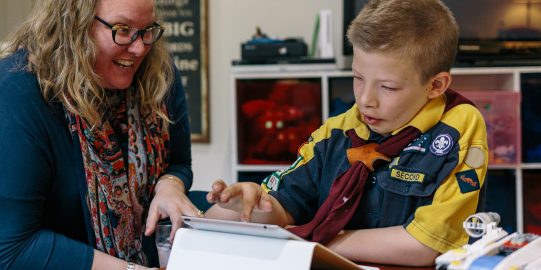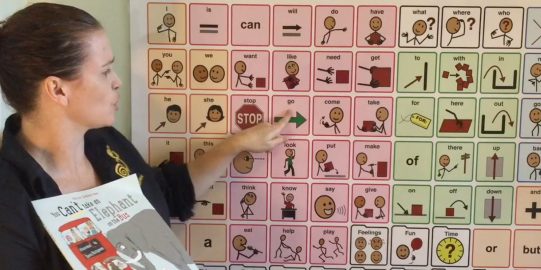Does communication stop when you get home from work or school? No!
Should AAC only happen at work or school? No!
Successful communication happens when people with communication difficulties can use their Augmentative and Alternative Communication (AAC) system in all environments. And families are so important in this process.
In this blog post, you will find some general strategies for using home, as well as our favorite AAC tips for parents.
General strategies for home
Your home is a busy active place, with many comings and goings. But two things need to stay consistent for your child who uses AAC. Firstly, your child needs to have easy access to their AAC system. And secondly, your child needs to see their AAC system being used by people at home to communicate real messages in real situations (aka “modeling”).
Always available
Is your home set up for AAC? Can you grab the AAC system ready to communicate quickly and easily? Can your child access their AAC system independently? It’s important to give your child access to an AAC system all the time. It needs to be in easy reach and/or always in the same place.
If your child uses a high-tech AAC system (such as Proloquo2Go on an iPad), it can be a great idea to have light-tech (or paper-based) version of it in places around the house. Could you stick laminated boards to places such as the mirror in the bathroom, cupboard doors or table tops? This means that the AAC can be grabbed and used easily! Having a light-tech or paper based backup of the AAC system is also useful if something happens to the AAC device. Follow the steps here to get yours started.
You can also download and print quick communication boards. These give you access to lots of words that can be used anytime.
AssistiveWare Core Word Classroom
The Proloquo2Go Crescendo core word boards are available in the AssistiveWare Core Word Classroom. The Core Word Classroom offers a large collection of learning resources, which are designed to support implementation of any AAC system that is based on core words. Learn more about the AssistiveWare Core Word Classroom.

